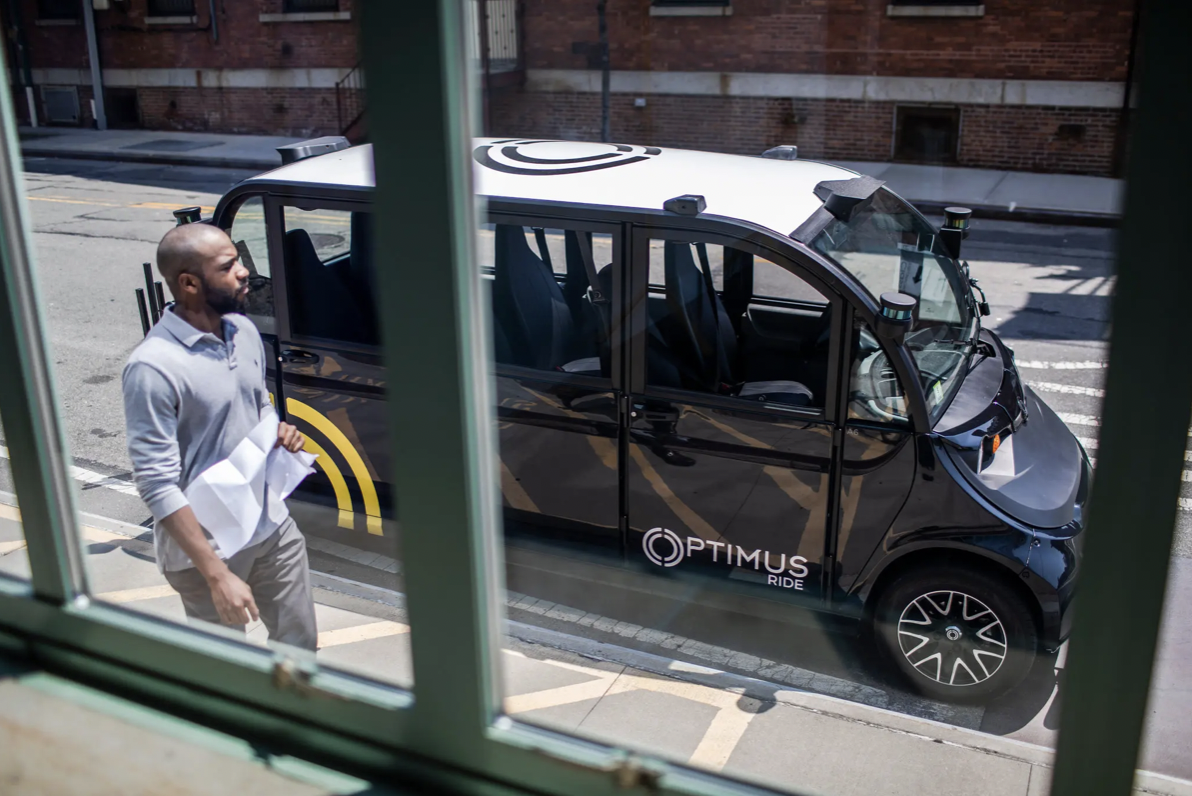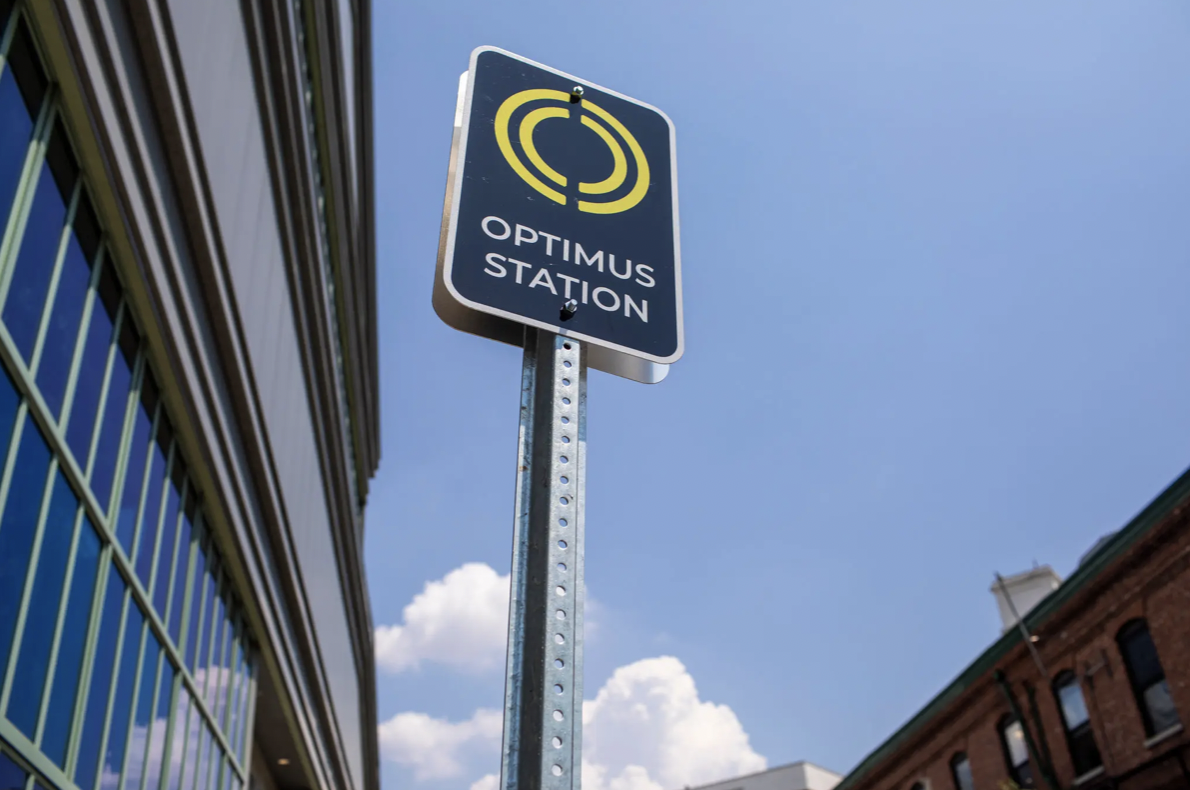Driverless Cars Arrive in New York City
Six autonomous cars will shuttle passengers around the Brooklyn Navy Yard for free.
Originally seen on nytimes.com
The cars at the Navy Yard will be operated by Optimus Ride.
Driverless cars have rolled into New York City, finally.
But don’t expect to see them traveling down Fifth Avenue anytime soon.
The cars have been corralled behind the gates of the sprawling Brooklyn Navy Yard — away from city streets teeming with cars, bikes and pedestrians.
The cars will begin shuttling people on Wednesday around a loop that is just over one mile at the yard, a 300-acre, privately operated manufacturing and technology hub.
They will run seven days a week to meet passengers going to and from a recently opened ferry landing. There is no charge for a ride and anyone can hop in.
Autonomous vehicles have been heralded as the next revolution in transportation, promising to move people and goods far more efficiently than cars dependent on drivers.
Advocates say the self-driving technology can be harnessed to increase the reliability and safety of taxis, Ubers and buses, as well as to make truck deliveries and to operate construction machinery. They also say it can reduce the need for personal cars and parking spaces in congested cities.
But some of this enthusiasm waned after a woman walking a bicycle on a street in Tempe, Ariz., was fatally struck last year by a self-driving carbeing tested by Uber. It was the first known pedestrian death involving a self-driving vehicle, though three Tesla drivers also have died in the last several years in crashes that happened after an autopilot driver-assistance system was activated.
And self-driving cars that rely on gas will still spew greenhouse gases that contribute to climate change.
Still, autonomous vehicles continue to be tested in more than a dozen communities around the country, according to Samuel I. Schwartz, a transportation consultant and author of “No One at the Wheel.” He added that almost all of these self-driving cars are confined to enclosed areas, though a few have operated on a limited basis on public roads.
“In 2017, autonomous vehicles were two years away from hitting the street,” Mr. Schwartz said. “In 2019, they are at least five years away. Just about everybody that promised autonomous vehicles by 2019 has retrenched. It’s far more complicated than they imagined.”
In New York City, autonomous vehicles are likely a long way from being allowed on public roads.
For now, they are relegated to a fleet of six electric Polaris vehicles at the Navy Yard that have been retrofitted with laser scanners, cameras and a sophisticated computer system. Just look for the shiny mini tram with the “self-driving” sign.
“I think it’s absolutely cool, but anything can happen,” said Frank Davis, afire safety engineer who was visiting the yard and plans to take a ride though he remains concerned about the overall safety of self-driving cars. “For a shuttle, it’s fine, but on the road, no. People fail, so does technology.”
The cars at the Navy Yard are operated by Optimus Ride, a start-up company founded in 2015 by five graduates and researchers from the Massachusetts Institute of Technology.
Since then, the company has provided more than 20,000 autonomous vehicle rides, mostly around Boston’s Seaport neighborhood, where it is based, and also in a residential community in South Weymouth, Mass., a Boston suburb. The cars have supplemented local bus and train service by getting riders to stations.
Optimus Ride was founded in 2015 by five graduates and researchers from the Massachusetts Institute of Technology.
Passengers on Optimus Ride vehicles are never onboard by themselves. A team of two people — a safety driver and a software operator — goes on every ride to take over the controls if needed, and to collect data to help develop a comprehensive driverless technology system.
The company has not had any accidents or injuries involving the driverless cars, said Ryan Chin, a co-founder of Optimus Ride and the chief executive.
“Most accidents are caused by human error,” said Mr. Chin, including people driving while texting or intoxicated, and falling asleep behind the wheel. “Those are all human characteristics we can actually program out of the vehicle. Our computers will never get tired as long as there’s power.”
Mr. Chin met David Ehrenberg, the president and chief executive of the Brooklyn Navy Yard Development Corporation, a nonprofit that manages the site, at a conference several years ago. The two started talking, and soon Mr. Chin was touring the yard where battleships like the Missouri were once built.
The yard has become a laboratory for urban technology, in part because fewer regulations and restrictions exist there than on public streets. It is a city within a city, with 400 companies and 10,000 workers. Citi Bike, the bike-share program, was first tried out at the yard before launching in Manhattan. Drones have also been used to inspect buildings.
“I said, ‘This is the perfect landing spot for an autonomous car in New York,’” Mr. Ehrenberg recalled telling Mr. Chin. “There is — we think — no better place than the Navy Yard to test and learn about new technologies.”
Mr. Ehrenberg’s organization contracted with Optimus for two years to provide shuttles for a recently launched city ferry landing — there have been 40,000 ferry trips since May — and to support local job development. It declined to disclose how much it paid, citing the confidentiality of the agreement. No public money was used.
Optimus opened an office at the yard, and hired 18 local operations workers with salaries ranging from $20 to $65 an hour, including recent engineering graduates of the New York City College of Technology, which is part of the City University of New York. It is also working with a high school at the yard to create an internship program.
The driverless cars arrived in April for test runs and are impossible to miss.
“It’s a self-driving machine, I’ve never seen one before,” said Quinn Castillo, a security officer at the yard. “When is it going to start taking passengers?”
But Julia Janicelli, who works for a fashion company at the yard, said she did not find a driverless car all that appealing. Would she try it? “Maybe if I’m really bored at lunch one day but I wouldn’t seek it out,” she said.
Matt Cortright, an architectural designer who rides his bike to work (the cars have a bike rack), said that a driverless car is still a car. “My general perception is we have too many cars already and adding cars without drivers doesn’t solve the problem.” he said.
Plus, he added, “If I get hit by a car, I want to be able to sue the person driving it.”
On a test run recently, Greg Zborowski, a systems engineer for Optimus, slid behind the wheel and pressed a green button. The car started and then accelerated. It is programmed to go no faster than 15 miles per hour and to obey all traffic rules.
At a stop sign, it came to a full stop. It inched forward to clear a blind spot, and made a left turn followed by a quick right. Later, it swerved around a driver opening his car door.
“No hands,” Mr. Zborowski said, holding up his arms. “At no point am I interacting with it.”
Ruijie He, the vice president of engineering for Optimus, sat beside him with a laptop that was connected to the dashboard. The screen showed the car’s real-time calculations as its sensors registered other cars, pedestrians and cyclists.
Not long ago, Mr. He hit the brakes when a man on his phone darted in front of the car. The car is programmed to stop on its own, but Mr. He said he did not want to take any chances.
This time, there was no excitement. The car rolled to a stop and the ride was over.
“Pretty uneventful, but that’s what we’re trying for,” Mr. He said. “It should be boring.”


